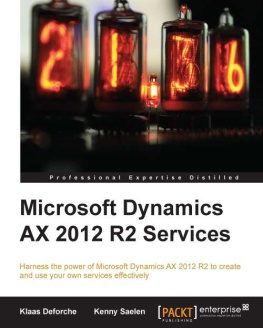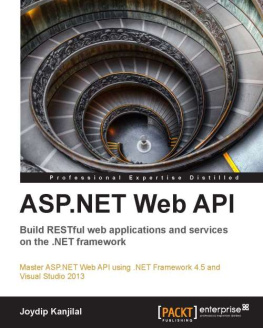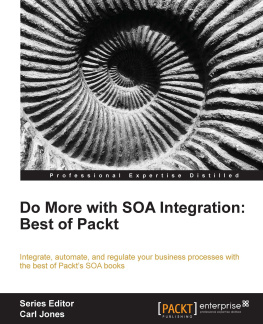About the Author

Thomas Erl is an independent consultant and Chief Architect at XMLTC Consulting Inc., in Vancouver, BC, Canada. He is widely known for inventing the Layered Scope Model for XML and Web services, and is the founder of the XML & Web Services Integration Framework (XWIF). Thomas is also responsible for eXtensinet.com, one of the world's largest XML and Web services resource portals.
Thomas is an avid photographer and artist. He provided all of the photographs used in this book, as well as the cover photo.
For more information, visit www.thomaserl.com.
About the Photographs
When I took these photographs in France several years ago, I never imagined they'd end up in a technical book. But, when I was asked to contribute to the aesthetic design of this guide, my collection of photographs was the first place I looked.
The theme I came up with was to represent XML with natural imagery, Web services with metalwork, and various levels of service-oriented architecture with photos of old building architecture from increasingly modern eras. The last chapter divider page intentionally departs from this theme it introduces the service-oriented enterprise with a photograph of a contemporary piece of architectural art consisting of spheres encapsulating spheres. Appropriately, this panel of spheres was one of many with which a large building was assembled.
Finally, the photo of a large clock was chosen for the cover to tie together all of the other photographs, by representing the evolution of technology platforms through time.
For a descriptive legend of the photos used in this book, visit www.serviceoriented.ws. If you're interested in seeing some more of my work, feel free to visit www.thomaserl.com/photography/.
Chapter 1. Introduction
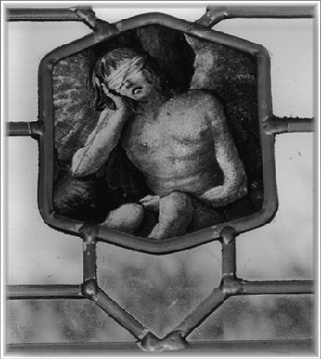
1.1 Why this guide is important
"Hype," by definition, is an exaggeration of fact. Both XML and Web services have had their share. When looking back at the rise of these technologies and the excitement that surrounded them, many who bought into the hype are beginning to feel disappointed. Organizations are realizing that their technical environments are not magically transformed simply by adding XML or Web services to the mix.
I actually believe that much of this publicity has been warranted. This platform's potential is real, and its importance cannot be understated. When properly applied, it not only improves the technology of an organization, but also the manner in which business automation is delivered. When properly applied .
What's been exaggerated isn't as much the potential, but its perceived simplicity. A well-designed, service-oriented environment can simplify and streamline many aspects of information technology, but achieving this state is no simple matter. The technology set introduced by XML and Web services is diversely complex. In order to truly leverage its benefits, you first need to appreciate the implications of this complexity. Then, you need to strategize.
1.1.1 The hammer and XML
It all starts with XML. Like a hammer, XML is a tool. If you pay attention to how you use it, you'll hit the nail every time; if you don't, chances are your thumb will take a beating. On its own, it does not solve or create problemsthe results of using XML are directly related to how intelligently it is applied.
For years, industry analysts have theorized and speculated about the benefits XML will introduce to the age of online data sharing. Because this technology platform provides a potential ideal for a universal data format, it will lead the world into a new era of information unity and parity.
The potential is real, but the manner in which XML is being applied in the real world is anything but ideal. XML is a specification, a revolutionary innovation that exists in a document that describes a simple idea, with huge implications. The fact that XML has been adopted into the IT mainstream is good. It establishes a common technology used for a common purpose. Simply using XML, however, in no way guarantees that you will realize any of its true benefits. You will be staying current, complying with a worldwide platform shift, and you will not feel left out when reading about how others are riding the XML wave, but you will not see anything revolutionary happening in your world.
1.1.2 XML and Web services
If XML is a hammer, then Web services are what? The nail? The hand that holds it? Whatever it is you're building, Web services are the building blocks you can use after you've first pounded out a solid foundation with XML. That doesn't mean you can't start using Web services without first properly integrating XML, but then there's nothing stopping you from building that dream house in the swamplands either.
This guide, in fact, is mostly about integration with Web services technologies and service-oriented design principles. This makes it no less of a book about XML, since the Web services platform is a natural continuation of the XML movement.
1.1.3 Web services and Service-Oriented Architecture
As you read through this book, you will notice that the path to building service-oriented architecture is riddled with pitfalls and risks. Too often, organizations investing in Web services discover the errors of their ways once entire solutions have been built and deployed. This is not necessarily a bad or neglectful occurrence. It's simply a tribute to the vastness of this platform.
With its complex and comprehensive feature set, though, comes a load of power. Use this technology the right way, and you truly can build a better enterprise. That statement goes beyond IT, because service-oriented concepts can reach out and change the way you model your business. Grasping the potential is an important first step. Equally as important, though, is understanding what's involved with realizing this potential. That takes us back to integration strategy.
1.1.4 Service-Oriented Architecture and the hammer
Unfortunately, the majority of corporate IT departments do not employ any form of integration or migration strategy. Without a planned integration, standards cannot be positioned, and the resulting ad hoc usage of these technologies only ends up contributing to existing disparity. It's the equivalent of construction workers building a home without direction and without a blueprint. With the absence of a planned and coordinated effort, a group of hammering workers will not only not create a quality foundation, they won't be building anything resembling a foundation at all.
1.1.5 The hammer and you
Strategizing with a foreknowledge of how to best incorporate XML, Web services, and service-oriented design principles into the various domains that make up your automated enterprise, however, will put you on a path at the end of which lies a sophisticated and adaptive automation environment. It will allow you to transition toward an integrated enterprise with superior data sharing and unprecedented control of your corporate business models.
This guide is your map. The strategies, recommendations, and best practices provided here collectively form a framework that offers direction and guidance through the twists and turns along the road to building service-oriented architecture and, ultimately, a service-oriented enterprise. So, grab your hammer and enjoy the ride!
1.2 The XML & Web Services Integration Framework (XWIF)

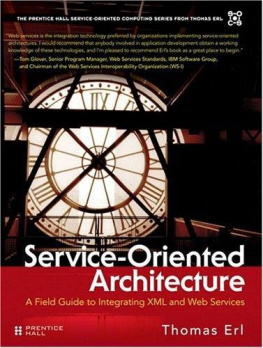
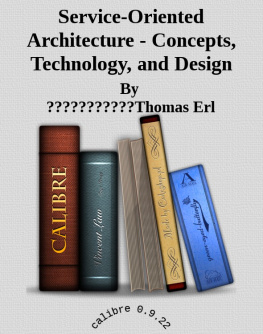
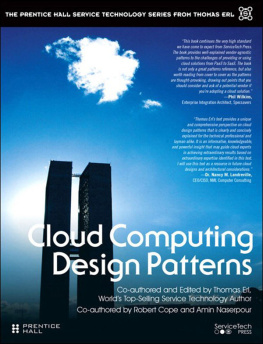


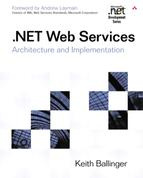
![Binildas A. Christudas [Binildas A. Christudas] - Service Oriented Java Business Integration: Enterprise Service Bus integration solutions for Java developers](/uploads/posts/book/119365/thumbs/binildas-a-christudas-binildas-a-christudas.jpg)
